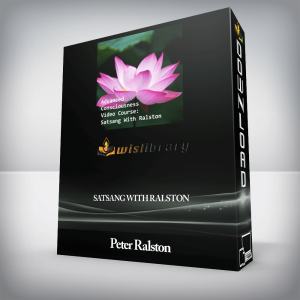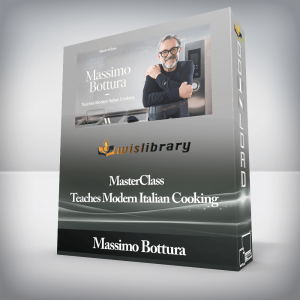12 Hours 09 MinutesBecome a leader in the mental health field and elevate your practice with state-ofthe-art advancements for working with some of our toughest clients—children, adolescents and families suffering from trauma and attachment wounds.Purchase 2-Day: Trauma and Attachment Certification Course – Lois Ehrmann courses at here with PRICE $299.99 $124Become a leader in the mental health field and elevate your practice with state-ofthe-art advancements for working with some of our toughest clients—children, adolescents and families suffering from trauma and attachment wounds.Begin by watching Dr. Lois Ehrmann for this intensive Trauma and Attachment Certification Course recording and learn the most effective evidence-based therapeutic interventions for clients where the foundational blocks of attachment are fractured and at times not even there.Let Dr. Ehrmann help you take your practice to the next level as she teaches you to integrate bottom up interventions rooted in Eye Movement Desensitization Reprocessing (EMDR), Internal Family Systems (IFS), Attachment Focused Family Therapy, Bibliotherapy, Expressive Therapies, and Somatic Psychotherapy in your treatment of these clients.You will learn cutting-edge interventions to:Repair and recover your client’s trauma triggers, fears about connecting in relationships, self-destructive patterns, negative limiting beliefs and affect dysregulationUnpack your client’s history and create a cohesive trauma narrativeAssess the strength and health of the parental/caregiver systemAssess your client’s Internal Working Model and attachment categoryOperationalize core treatment goals into measurable objectivesNeuroscience revelations show us that healing in these areas require bottom up processes and not top down talk therapy processes. Through video case examples, video demonstration and thought-provoking lecture this intensive Trauma and Attachment Certification Course recording will make the latest research accessible and user-friendly and clearly link it to your clinical work.Don’t miss this opportunity to become a Certified Child and Adolescent Trauma Professional (CATP).Articulate the neurological impact of trauma on attachment in children and adolescents and how current research informs treatment planning.Differentiate between the clinical presentation of children and adolescents who exhibit insecure vs. secure vs. disorganized attachment.Implement trauma and attachment assessments to develop observable and measurable treatment plan goals.Implement the “internal working model” intervention to clarify the client’s attachment category to inform treatment planning.Operationalize the core treatment goals into measurable objectives in the treatment of trauma and attachment.Implement the Integrated Attachment and Trauma Timeline Strategy (IATTS) to organize and construct the client’s trauma narrative.Utilize the client’s trauma narrative to process attachment disruptions and trauma responses.Apply bilateral tapping to reduce the intensity of strong affect and/or to amplify a strength resource.Integrate elements of Internal Family Systems psychotherapy to map out a child’s problematic behavior and the parent’s responses to the behavior.Utilize bibliotherapy to teach children, adolescents and families the concepts of Internal Family Systems psychotherapy to improve treatment outcomes.Integrate resource tapping (EMDR) into Attachment Focused Family Therapy to increase the strength of attachment and healthy regulation in children, adolescents and families.Teach clients mindfulness-based breath work, guided imagery and sensory awareness to improve affect regulation.Attachment Theory and Attachment TherapyRecent influences in attachment theory and therapyAttachment importance in the development of the healthy individualAttachment styles vs. disorganized attachmentNeuroscience supporting bottom up therapeutic strategiesDSM-5®: Classification of trauma and stressor-related disordersNeurological Impact of Trauma and AttachmentHow the research informs treatmentTrauma is stored/stuck in the right hemisphereChronic activation of the fight/flight/freeze response (Amygdala issues)The reason for the stucknessCortisol and its impact on cognitive impairmentIndicators of Trauma and Attachment DisruptionCommon diagnostic mistakesCharacteristics of the children and adultsView attachment as a continuumAssessments for Trauma and Attachment Wounds Case Studies and Video SessionsProtocol to assess the strength and health of the parental/caregiver systemMost effective scales, measures and instrumentsMethods to explain the Internal Working Model of the child to the parent/caregiverDiagnostic considerations/Differential diagnosisComplex Trauma, Complex PTSD, Developmental Trauma, Disorganized Attachment, Reactive Attachment DisorderTranslate Trauma and Attachment Goals into SMART ObjectivesCore treatment goalsRelational factors between client/therapist and child/ parent/caregiverDismantling the individual’s unhealthy negative internal working modelIncrease the level of affective masteryReduce distancing defenses Increase attachment within healthy relationships and for adults with their own childrenContainment of rage anger and pain so that resolution can occurHow to operationalize goals into measurable objectivesThe Integrated Attachment and Trauma Timeline Strategy (IATTS): Help Children and Families Unpack their HistoryA guide to move from assessment to treatmentTechniques to clarify and construct the client’s cohesive narrativeMethods to “chunk” overwhelming and disorganized historical materialIntegrates with evidence-base treatment modalitiesEye Movement Desensitization Reprocessing (EMDR)Internal Family Systems (IFS)Attachment Focused Family TherapyBibliotherapy Expressive Therapies and Somatic PsychotherapyBOTTOM UP TECHNIQUES: PUTTING IT ALL TOGETHER WITH PRACTICE TIME!A Child Who Had No Safety: Case StudyA view of Attachment Focused Family TherapyHealthy vs. disrupted attachment/bonding cycleIntersubjectivity and Attunement: What being in sync does/does not look likePACE: Playfulness, Acceptance, Curiosity and EmpathyCo-regulation of affect and co-creation of experiencesWhen Traumatized Children are Broken into Many Parts: Case StudySecure vs. anxious and avoidant attachment stylesDisorganized attachment: Recognize the signsHow attachment impacts parent-child dyadsIntegrate IFS into Attachment Focused Family TherapyParts work through sand tray, art strategies and puppetryRepair the Fracture with Adoptive Parents: Case StudyClarify the trauma and negative internal working modelParts mapping: Teach parts concepts to children and parentsIntegrate Bibliotherapy into IFSAssist parents how to engage in self-led parentingProtecting Sibling and Self In Foster Care: Case StudyProtector parts activity/worksheetTeach children to use their inner imagination to work with their partTransform terror into trustThe Rage that Comes from Physical Abuse: Case StudyWhen children reenact the trauma of abuseSee the positive intention in all partsTeach compassion, curiosity, calmness and connectedness throughExpressive therapiesParts that Children Wall Off: Case StudyTerrified of being terrifiedThe freeze of the Fight Flight Freeze Trauma ResponseHelp children understand their own thoughts, feelings, behaviors and experiencesWhen Parents and Children Both Have Activated Parts: Case StudyActivation Parts Map: Z-ProcessNaming and witnessing the activated partsHelping the parts understand each otherFull of Rage with No Where to Go: Case StudyIntegrate EMDR into Attachment Focused Family TherapyTeach parents and children resource tapping and positive self-talkUse tapping as part of imaginal nurturingCalming and self-regulating strategies from EFT Naming feelings with bilateral drummingOther Trauma Specific Evidence-base Treatment ModalitiesWhat they are used for and why clients seem to respond wellSensorimotor psychotherapyMindfulness-based approaches including breath work and imageryBiofeedback and EEG BiofeedbackLimitations of the related research and risks of each approachTag: 2-Day: Trauma and Attachment Certification Course – Lois Ehrmann Review. 2-Day: Trauma and Attachment Certification Course – Lois Ehrmann download. 2-Day: Trauma and Attachment Certification Course – Lois Ehrmann discount.Purchase 2-Day: Trauma and Attachment Certification Course – Lois Ehrmann courses at here with PRICE $299.99 $124

 EMDR Mastery Course: Assessment, Resourcing and Treatment Techniques for Trauma and Anxiety – Jennifer Sweeton
₹20,584.00
EMDR Mastery Course: Assessment, Resourcing and Treatment Techniques for Trauma and Anxiety – Jennifer Sweeton
₹20,584.00
 2-Day Workshop: Polyvagal Theory Informed Trauma Assessment and Interventions: An Autonomic Roadmap to Safety, Connection and Healing – Deborah Dana
₹20,584.00
2-Day Workshop: Polyvagal Theory Informed Trauma Assessment and Interventions: An Autonomic Roadmap to Safety, Connection and Healing – Deborah Dana
₹20,584.00
2-Day: Trauma and Attachment Certification Course – Lois Ehrmann
₹20,584.00




